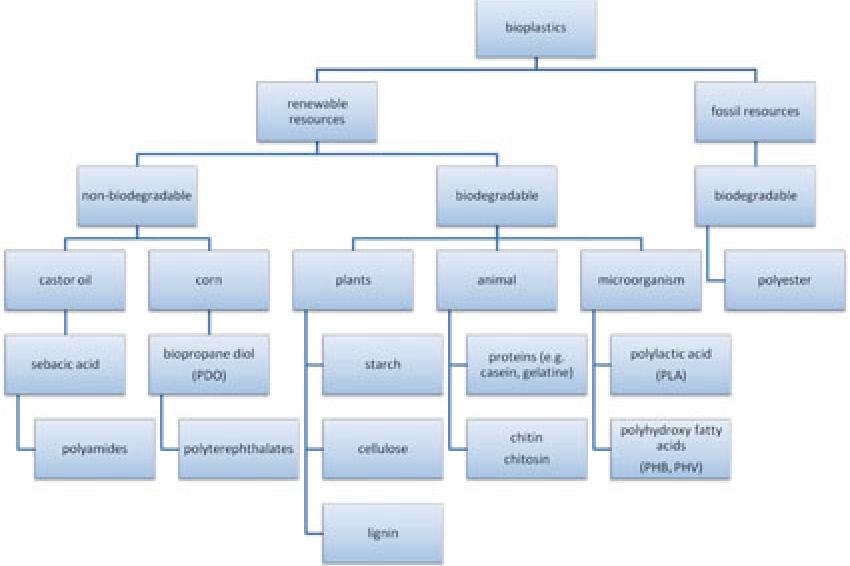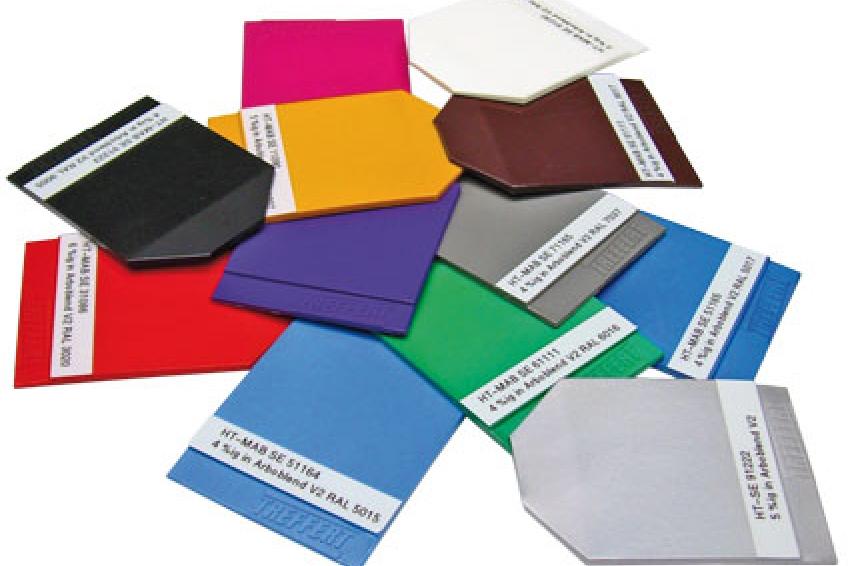The Colorful World of Bioplastics
Bioplastics Can Be as Colorful as Polymers Made of Fossil Resources
In the beginning of the production of plastics the basis of the raw materials were renewable resources. This changed in the early 20th Century. Since the end of the 1940s the raw materials are of fossil nature.
The amounts of plastics produced worldwide have constantly increased ever since. Due to a large variety of polymeric materials with different characteristics and functions it is possible to find the perfect material for each application. So plastics are often the choice of material in applications we come into contact in our daily life.
For the last 20 years an increase in the development and production of bioplastics could be seen and the interest in these types of polymers was raised. As there is no exact definition for the term ‘bioplastics' national as well as international groups are working on the standardization of a terminology. In general, polymers which are - at least in parts - based on renewable resource materials are referred to as bioplastics or biopolymers. The different types of bioplastics are shown in an overview in figure 1. These materials can be biodegradable but do not need to be. Biodegradable polymers on the other hand can be based on renewable or on fossil resources. The biodegradability can be defined according to several standards. In the European standard the maximum amount of non-biodegradable material allowed is below 5% with a maximum concentration of 1 % for each filler. There are also restrictions concerning the content of several substances which are mainly metals.
Coloring Of Bioplastics
Beside quality and function the design is another decisive factor for the success of a product. And color is always part of the design. Color is an individual perception which is stimulate by light received by our eyes. The colored objects are not self illuminating; therefore an extra light source is necessary. Its spectral power distribution across the wavelengths constitutes illumination. The object reflects a fraction of the wavelength of the light which is then detected by the eye of the observer and identified as color. So, the color stimulus produced by an object is a dual function of illumination and observation.
As defined in the German DIN standard, color is a sense-impression mediated through the eye to differentiate two parts border to each other. So in industrial color laboratories, color is not an absolute value but a comparison between the colored product and a defined reference or standard.
The term colorant comprises all kinds of colored substances changing the appearance of a material.
Pigments And Dyes
There are two types of colorants used in the coloring of plastics, pigments and dyes. Pigments can be of organic or inorganic structure and are insoluble in plastics, during processing as well as in the end product. Organic pigments normally possess higher color strength but less opacity than inorganic pigments. Additional factors for the color strength of a pigment are the particle size and the dispersion in the matrix.
Dyes are organic molecules and dissolve in the medium of application. Therefore, no particles are visible and the transparency of the material remains unchanged. A variety of colorants were developed over the years for the coloring of standard and engineering polymers. The suitability of these pigments for the coloring of bioplastics has to be evaluated for each type of polymer.
Engineering polymers for technical application with sophisticated mechanical requirement can be replaced by a new material group of "engineering bioplastics". These materials are non-biodegradable but the monomers are based on renewable resources like castor oil, corn or wood. For the coloring of these "engineering bioplastics" as polyamide 6.10 (58% made out of renewable materials), polyamide 10.10 (98% made out of renewable materials), polyterephthalate or polyester (lignin-based) and many more nearly the same rules as for standard engineering plastics occur.
As color follows function these materials can e.g. be joined and/or marked by laser. In the laser welding process the materials have to be lasertransparent and laserabsorbing. The lasermarking technology uses materials which are specially conditioned for dark and light writing. All this can be realized with color and function formulations by Treffert Polymertechnology.
Some limitations have to be taken into account for biodegradable polymers as PLA or cellulose which are used in packaging materials and packaging. In the European standard several substances, mainly metals, are limited in their concentration. The maximum concentration of these metal ions can have in impact on the color formulations. For example, the concentration of phthalocyanine pigments is limited by the copper concentration of 50 ppm. Therefore, the maximum amount of pigment blue 15:3 or pigment green 7 which are allowed to be used in color formulations is way below normal concentrations.
Masterbatches
Considering the importance of good dispersion for achieving high quality color, it is clear that the "delivery" system or form in which the color is supplied to the processor is of vital importance. In masterbatches pigments and dyes and/or special additives are optimally dispersed at high concentration in a single carrier resin, a polymer similar in nature and type to the material to be colored. This not only applies for polymers made of fossil resources but also for bioplastics. These materials can also be used as carrier materials for color concentrates and the customer can exploit all the advantages of masterbatches. Due to the fact that most polymers have an own color, the resin is part of the color formulation. So custom colors can be specifically formulated and the colorants are adjusted on the specific biopolymer.
Conclusions
Bioplastics, especially engineering bioplastics can be a sustainable alternative to fossil materials. In the future, they can also be an economical solution without making compromises in the quality of the final product. Due to the shortening of the fossil resources and therefore, the higher prices, the use of bioplastics will increase. In the coloration of bioplastics the same standards can be applied as to fossil materials. Masterbatches for color and function can be made to the customer requirements.
Contact
Treffert GmbH & Co. KG
In der Weide 17
55411 Bingen
Germany







